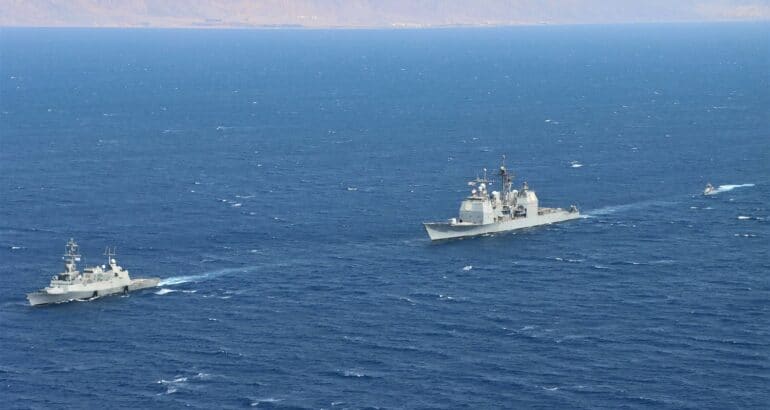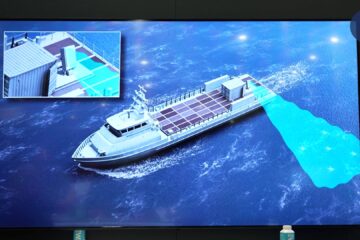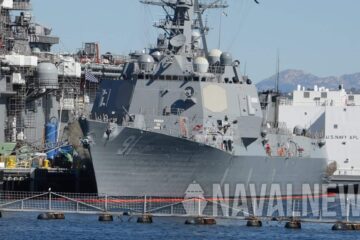U.S. Naval Forces Central Command / U.S. 5th Fleet
Four Israeli and U.S. Navy ships sailed together in the Gulf of Aqaba as the U.S. Department of Defense shifted Israel from U.S. European Command to U.S. Central Command’s area of responsibility.
“Our navies are ushering in a new era of expanded cooperation and capacity building. We are partnering in new ways, which is essential for preserving security in today’s dynamic maritime environment.”
Vice Adm. Brad Cooper, commander of NAVCENT, U.S. 5th Fleet and Combined Maritime Forces
Guided-missile cruiser USS Monterey (CG 61) sailed alongside an Israeli Navy corvette and two patrol boats as a U.S. Navy P-8A Poseidon maritime patrol aircraft flew overhead. The units conducted air defense, high value unit defense, small boat operations and tactical maneuver training.
“Combined patrols like these help maintain regional maritime security and stability,” said Capt. Robert Francis, commodore for NAVCENT’s Task Force 55 which controls U.S. Navy surface assets in the Middle East. “The collaboration has been tremendous. We share a common understanding with our international counterparts that there is strength in unity.”
In January, the United States announced moving Israel from U.S. European Command to U.S. Central Command’s area of responsibility effective Sept. 1. The change offers new opportunities for cooperation among regional navies in the Middle East.
The U.S. 5th Fleet area of operations encompasses nearly 2.5 million square miles of water area and includes the Arabian Gulf, Gulf of Oman, Red Sea, parts of the Indian Ocean, and three critical choke points at the Strait of Hormuz, the Suez Canal and the Strait of Bab-al-Mandeb. With Israel’s addition, the region is now comprised of 21 countries.






